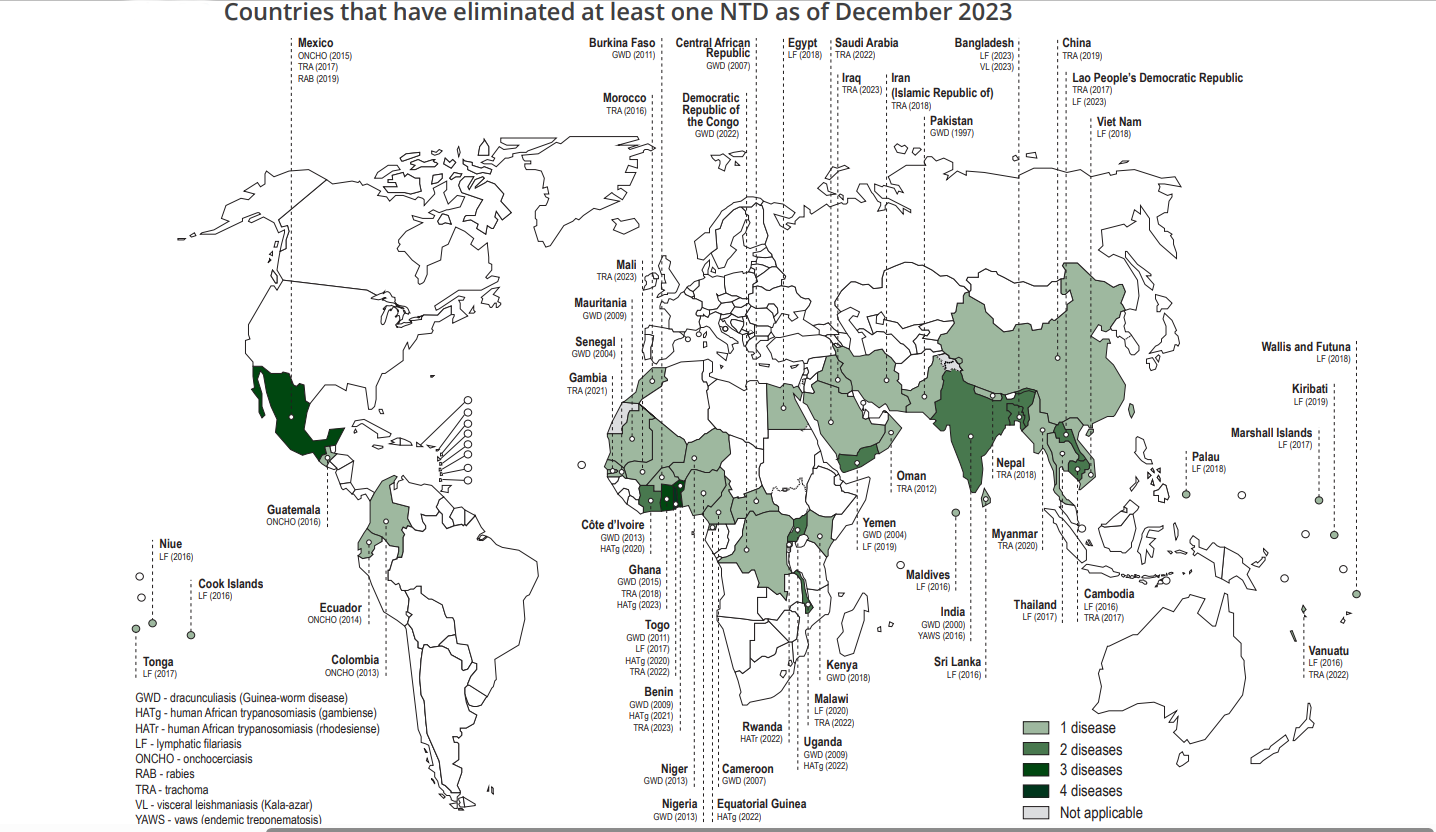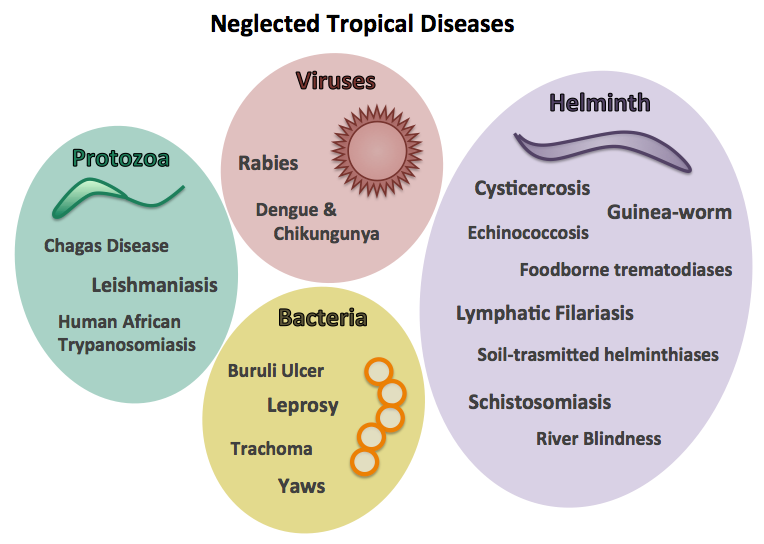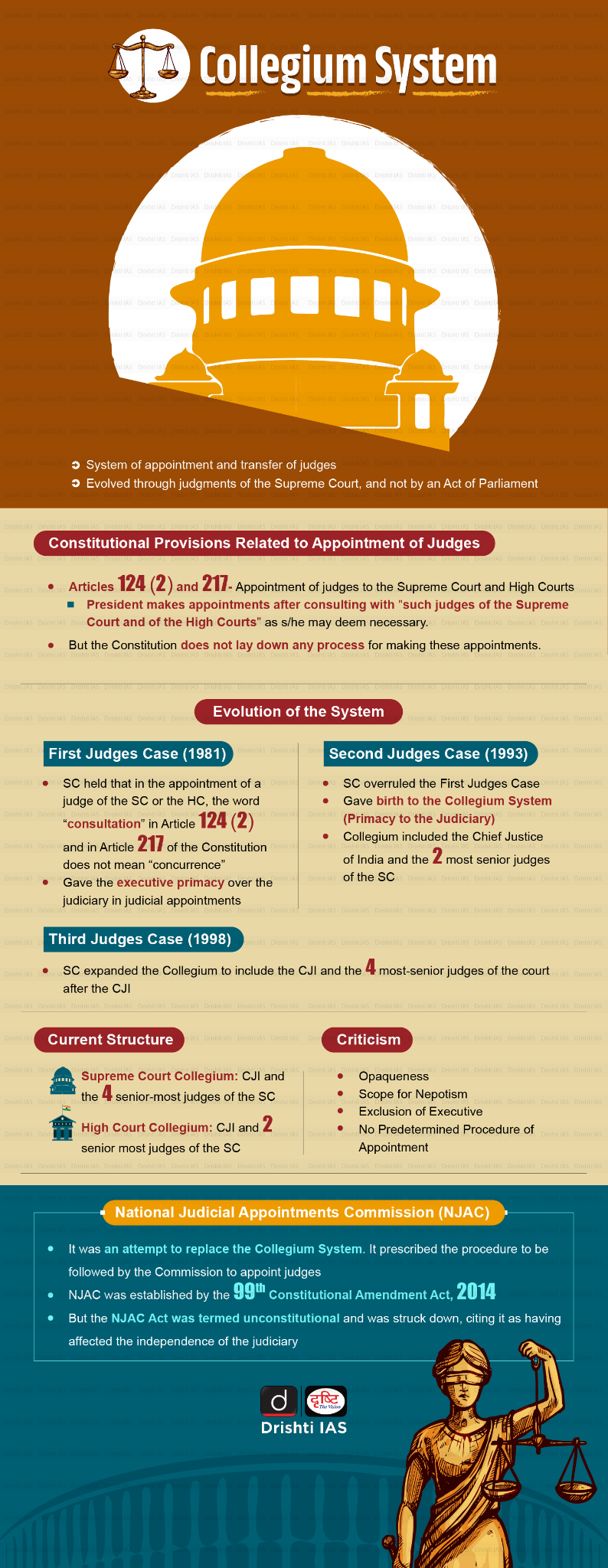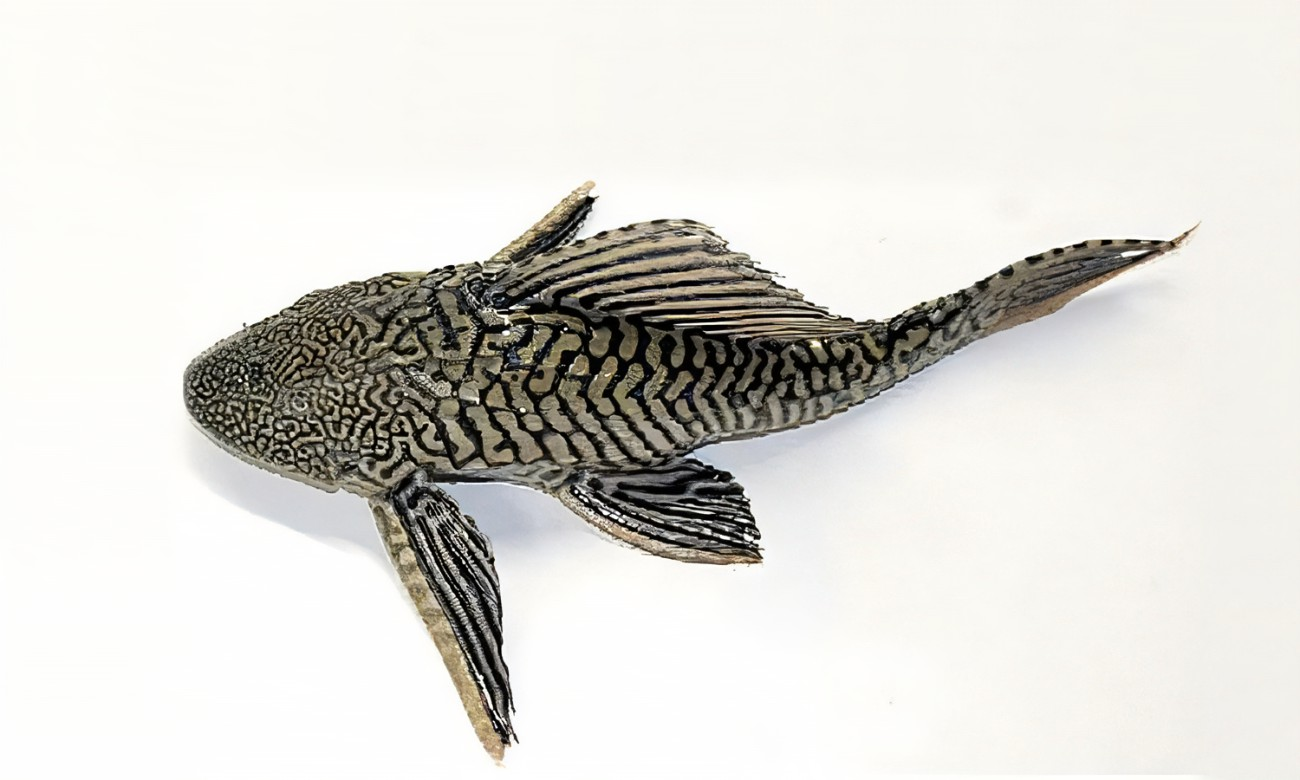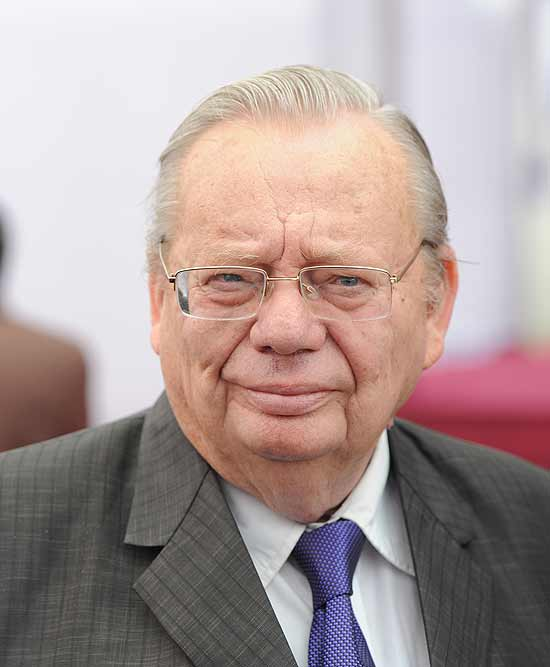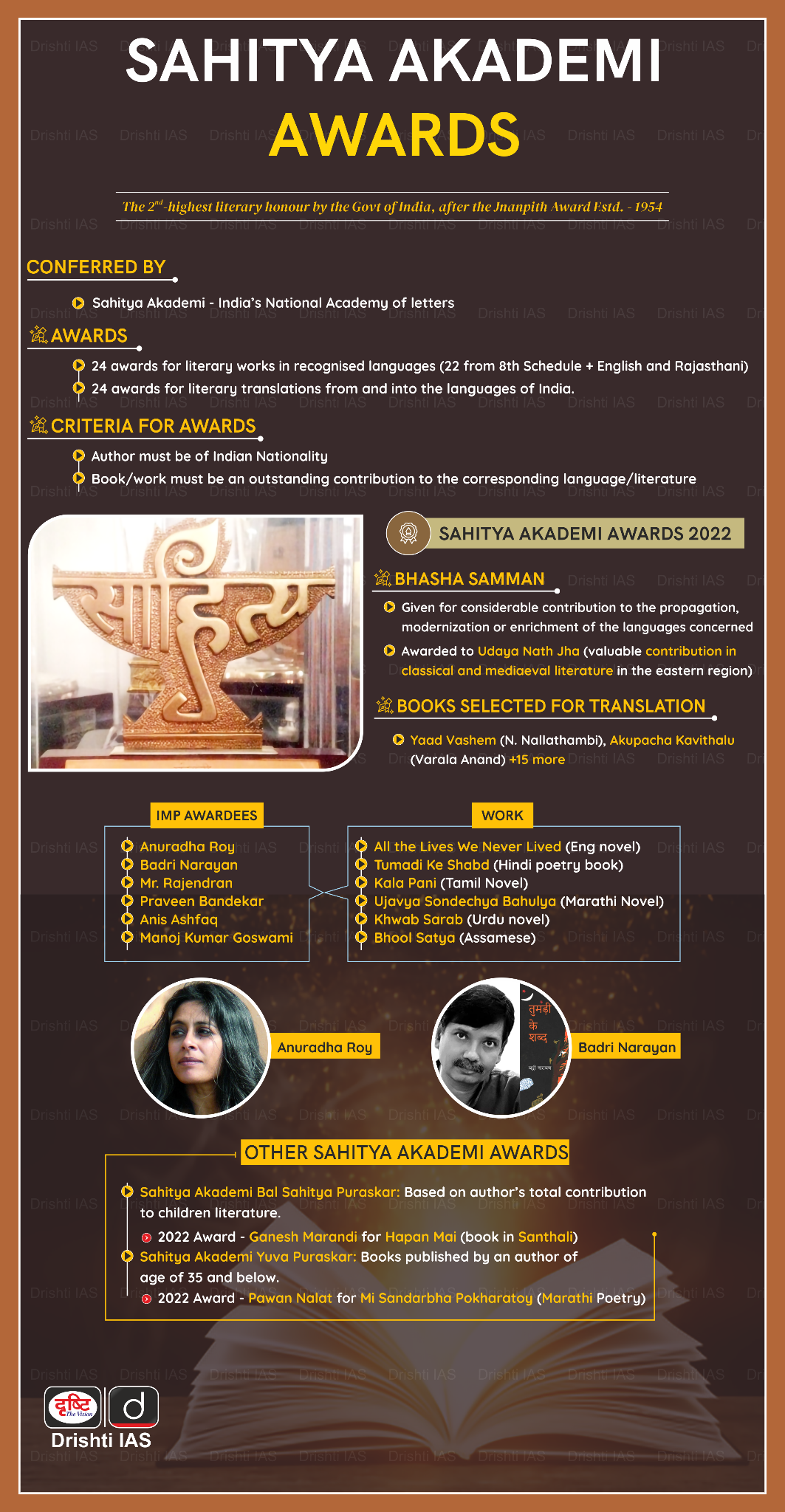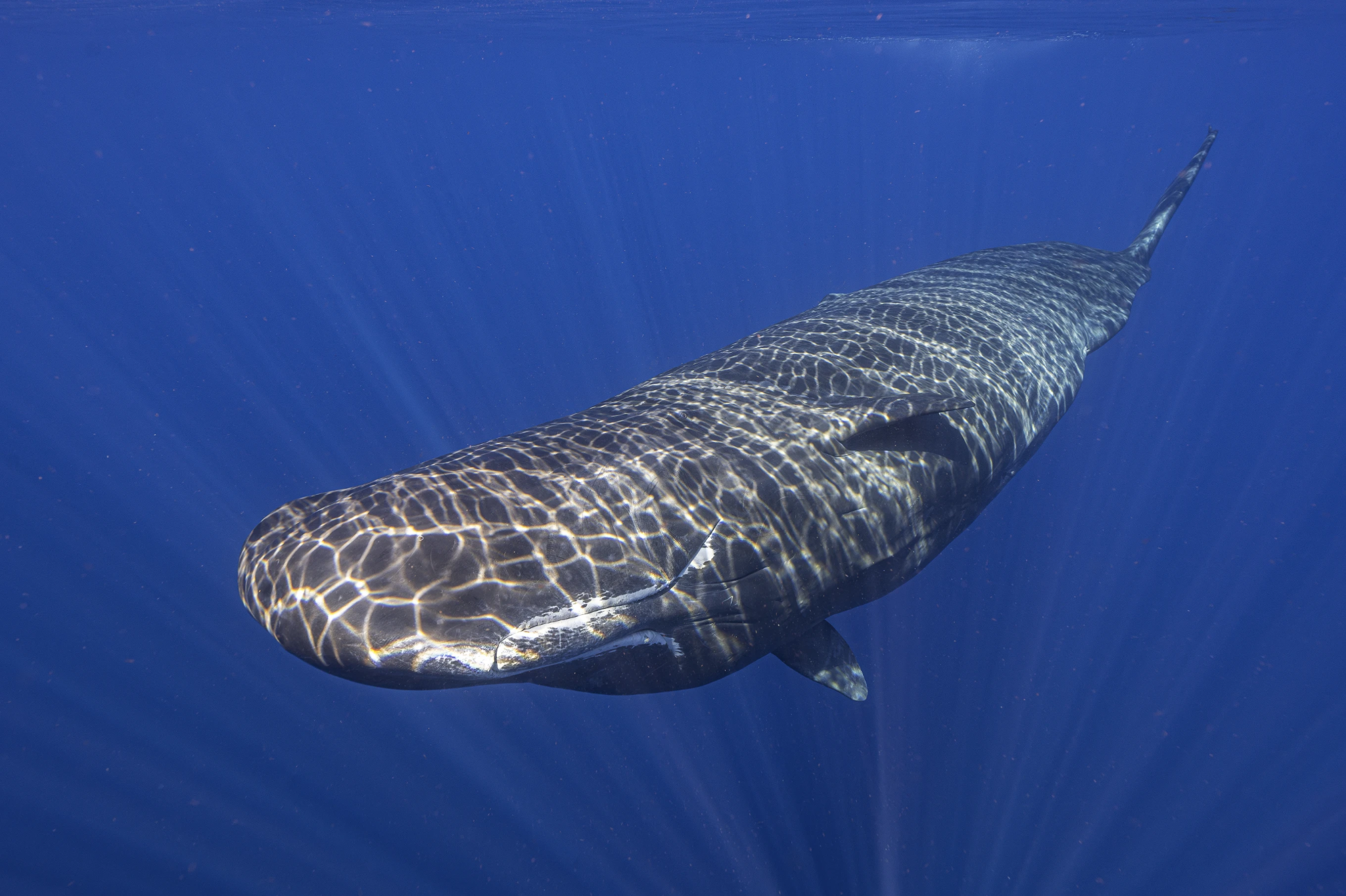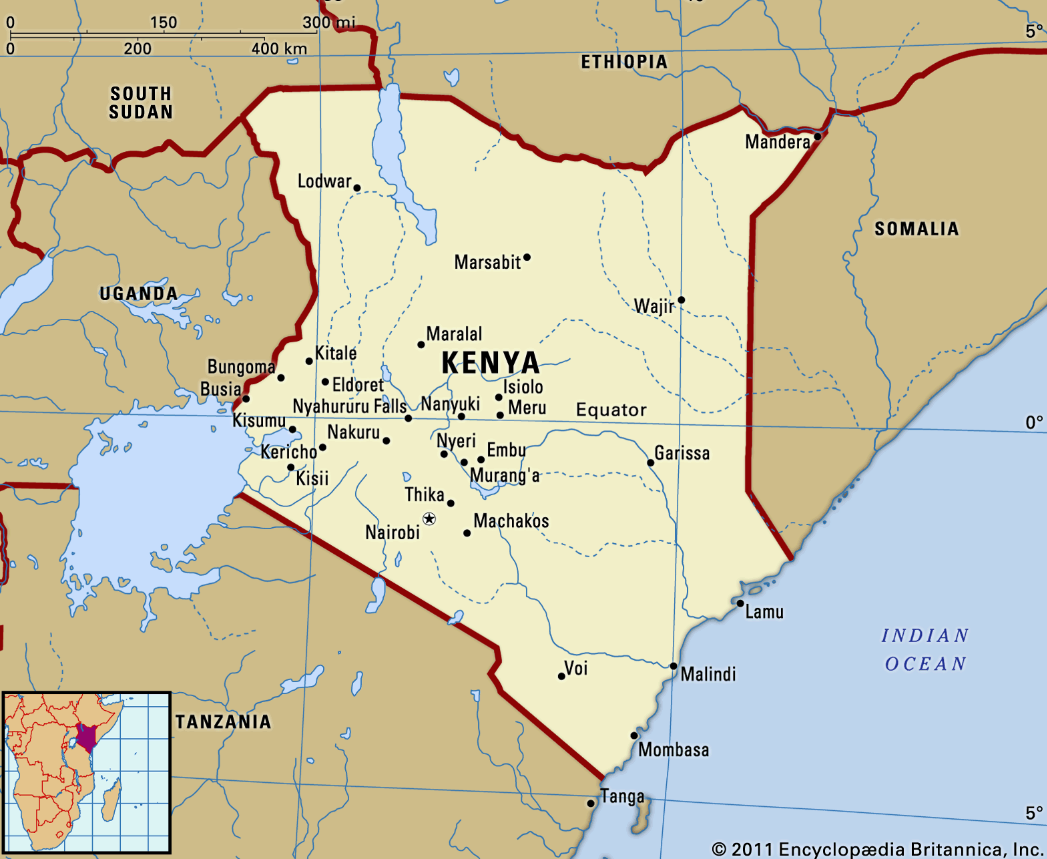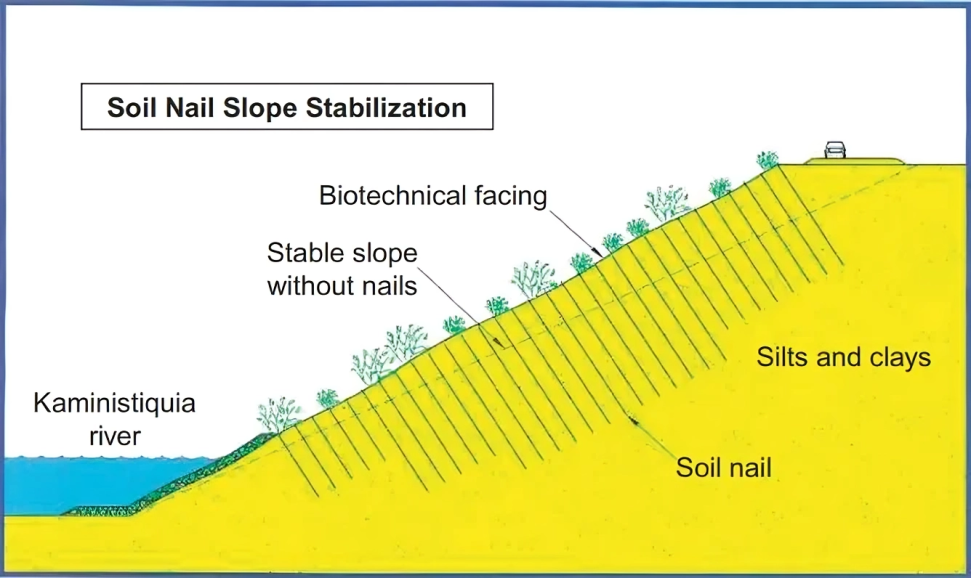Sundarbans
For Prelims: Sundarbans, Estuarine crocodile, Water monitor lizard, Gangetic dolphin, Olive ridley turtle, Bay of Bengal
For Mains: Sundarbans, Challenges Related to Sundarban
Why in News?
Recently, a study conducted by prominent environmental scientists has warned about the substantial threat of air pollution to the Sundarbans, an essential mangrove ecosystem in West Bengal.
What is Sundarbans?
- About:
- The Sundarbans hosts the largest mangrove forests in the world, lying on the delta of the Ganges, Brahmaputra and Meghna rivers on the Bay of Bengal.
- The mangrove ecosystem is a ecotone between the land and the sea in the tropical and subtropical regions.
- Flora and Fauna:
- Due to the ecotonic effect this zone fosters a rich blend of habitats, from freshwater swamps and intertidal mangroves to saline forests and open water.
- The Sundarbans is a sanctuary for a wide variety of species from different habitats, including rare and globally threatened wildlife such as the estuarine crocodile, water monitor lizard, Gangetic dolphin, and olive ridley turtle.
- Due to the ecotonic effect this zone fosters a rich blend of habitats, from freshwater swamps and intertidal mangroves to saline forests and open water.
- Protection:
- 40% of Sundarban lies in India and the rest in Bangladesh.
- It was designated a UNESCO World Heritage site in 1987 (India) and 1997 (Bangladesh).
- Sundarban Wetland, India was recognised as the ‘Wetland of International Importance’ under the Ramsar Convention in January 2019.
- Project Tiger: Royal Bengal Tigers in the Sundarbans are top predators that control prey populations, preventing overgrazing and maintaining the delicate balance of the ecosystem.
- Protecting tigers also safeguards a vast habitat for other plant and animal species, contributing to a healthy forest ecosystem in the Sundarbans.
- In 2011, India and Bangladesh signed an MoU on Conservation of the Sundarbans, recognising the need to monitor and conserve the Sundarbans.
What are the Challenges Faced by the Sundarbans?
- Rising Sea Levels: A consequence of climate change, rising sea levels threaten to inundate low-lying mangroves. This saltwater intrusion disrupts their delicate balance and makes them more vulnerable to storm surges during cyclones.
- Increased Intensity of Cyclones: Climate change is also linked to more frequent and intense storms. These cyclones can batter mangroves, causing physical damage and disrupting sediment patterns crucial for their survival.
- Cash and Food Crops: The conversion of mangrove forests for agriculture like cash crops (palm oil) or food production (rice paddies) destroys their habitat.
- This not only reduces the area available for these ecosystems but also fragments existing ones, impacting biodiversity.
- Loss of Ecosystem Services: Mangroves provide crucial services like shoreline protection and nursery grounds for fish. Deforestation disrupts these services, impacting coastal communities and fisheries.
- Threat to Wildlife: The loss of mangrove habitats due to climate change is leading to the loss of species in the near-threatened or endangered category.
- Settlement mangroves used to be safe havens for diverse molluscs and crustaceans, but they are disappearing due to polluted discharges and breeding activities of these species.
- Effect of Pollutants: Pollutants, enriched with black carbon or soot particles, from nearby urban areas and the entire Indo-Gangetic Plain region are worsening the air quality of the Sundarbans, impacting its ecosystem.
- These air pollutants significantly affect the ecology and biogeochemistry of the Sundarbans mangrove ecosystem.
Way Forward
- Protecting Streambanks: Cultivating native grass species like wild rice, Myriostachya wightiana, biscuit grass, and salt couch grass can stabilise streambanks and prevent erosion, instead of introducing non-local species like vetiver, which are not salt-tolerant.
- Promoting Sustainable Agriculture: Promoting soil-tolerant paddy varieties and organic agriculture practices can increase agricultural productivity and income for farmers while minimising environmental impact.
- Implementing rainwater harvesting and watershed development initiatives will further enhance agricultural production.
- Wastewater Treatment: Using natural processes and microorganisms for wastewater treatment, such as lactic acid bacteria and photosynthetic bacteria, can support water quality and ecosystem health.
- India-Bangladesh Collaboration: The India-Bangladesh Joint Working Group (JWG) should be transformed into a high-powered board of interdisciplinary experts to plan and implement climate resilience for the Sundarbans and the communities dependent on it.
- Innovative Solutions: The corrective measures include solar energy promotion,electric transportation, subsidised LPG, regulated tourism, closing down of pollutant factories, regulation of brick kilns and land use and strengthening of coastal regulations.
- Multi-Sectoral Approach: A multilayered approach to multi-engagement and multidimensional planning can be followed by the ministries of tourism, disaster management, agriculture, fisheries, and rural development.
|
Drishti Mains Question: Q. Discuss the environmental and socio-economic challenges faced by the Sundarbans region. Suggest measures for sustainable development and conservation in the region. |
UPSC Civil Services Examination, Previous Year Question (PYQ)
Prelims:
Q. Consider the following protected areas: (2012)
- Bandipur
- Bhitarkanika
- Manas
- Sundarbans
Which of the above are declared Tiger Reserves?
(a) 1 and 2 only
(b) 1, 3 and 4 only
(c) 2, 3 and 4 only
(d) 1, 2, 3 and 4
Ans: (b)
Q. With reference to India’s biodiversity, Ceylon frogmouth, Coppersmith barbet, Gray-chinned minivet and White-throated redstart are (2020)
(a) Birds
(b) Primates
(c) Reptiles
(d) Amphibians
Ans: (a)
Mains
Q. “The most significant achievement of modern law in India is the constitutionalization of environmental problems by the Supreme Court.” Discuss this statement with the help of relevant case laws. (2022)
Q.“Policy contradictions among various competing sectors and stakeholders have resulted in inadequate ‘protection and prevention of degradation’ to the environment.” Comment with relevant illustrations. (2018)
Global Report on Neglected Tropical Diseases 2024
For Prelims: World Health Assembly, World Health Organization (WHO), Neglected tropical diseases (NTD), HIV/AIDS, tuberculosis
For Mains: Key highlights of Global report on neglected tropical diseases (NTD) of 2024, About Neglected Tropical Diseases and related initiatives.
Why in News?
Ahead of the World Health Assembly 77th session, the World Health Organization (WHO) released its Global report on neglected tropical diseases (NTD) of 2024.
- The report provides an account of the progress made in 2023 towards the implementation of the Road map for neglected tropical diseases 2021-2030.
What are the Key highlights of the WHO Report?
- Global:
- Status for 2023:
- As of December 2023, a total of 50 countries have successfully eliminated at least one NTD, marking the halfway point towards the 2030 target of 100 countries.
- 5 countries were acknowledged by WHO for eliminating one NTD, and 1 country for eliminating two NTDs.
- In July 2023, Iraq became the 50th country to eliminate at least one NTD. This event marks the halfway point towards achieving the 100-country target set for 2030.
- Noma was added to the list of NTDs in 2023.
- In October 2023, Bangladesh became the first country to be validated by WHO for eliminating visceral leishmaniasis as a public health problem.
- Status for 2022:
- In 2022, 1.62 billion people required interventions against neglected tropical diseases (NTDs), reflecting a 26% decrease from 2010, but still dedicated efforts are needed to attain the road map’s global target of a 90% reduction by 2030.
- In 2022, approximately 848 million people received treatment for at least one NTD through preventive chemotherapy interventions, 49 million fewer than in 2021 but 50 million more than in 2020.
- As of the end of 2022, the number of reported deaths from vector-borne NTDs has increased by 22% (as compared with 2016).
- Status for 2023:
- India:
- India was certified free of NTDs like dracunculiasis and yaws.
- India, which has the highest disease burden, treated about 117 million fewer people for lymphatic filariasis and soil-transmitted helminthiasis in 2022 compared to 2021.
- 40.56% of India's population needed interventions against NTDs in 2022.
- Key challenges highlighted in the report include slow post Covid-19 recovery, funding uncertainties, geopolitical disruptions, climate change, gaps in knowledge and tools, and insufficient data in addressing NTDs.
What are the Key Facts About Neglected Tropical Diseases (NTDs)?
- About:
- According to WHO, Neglected tropical diseases (NTDs) are a diverse group of conditions caused by a variety of pathogens (including viruses, bacteria, parasites, fungi and toxins) and are associated with devastating health, social and economic consequences.
- NTDs are mainly prevalent among impoverished communities in tropical areas, although some have a much larger geographical distribution.
- Factors Contributing to these Diseases are Being "Neglected":
- The epidemiology of NTDs is complex and often related to environmental conditions.
- Epidemiology is the study of the determinants, occurrence, and distribution of health and disease in a defined population.
- Many of them are vector-borne, have animal reservoirs and are associated with complex life cycles.
- Compared to diseases like HIV/AIDS, malaria, and tuberculosis, NTDs receive significantly less funding for research and development of treatments.
- The epidemiology of NTDs is complex and often related to environmental conditions.
What are the Global and Indian Initiatives to tackle NTDs?
- Global Initiatives:
- WHO's 2021-2030 Roadmap: This ambitious plan prioritises impact over simply treating NTDs. It emphasises collaboration across healthcare, sanitation, and communities. Additionally, it encourages countries to take ownership of their NTD programs.
- 2012 London Declaration: This international agreement recognises the global burden of NTDs and promotes a unified approach to eliminate them.
- Indian Initiatives:
- Elimination Programs: India has successfully eliminated guinea worm, trachoma, and yaws. The Accelerated Plan for Elimination of Lymphatic Filariasis (APELF) aims to achieve the same for this disease by 2027.
- WHO Collaborations: India partners with WHO in regional alliances. For instance, a 2005 initiative with Bangladesh and Nepal focuses on early diagnosis and treatment of Kala-azar.
- Mass Drug Administration (MDA): This program involves regular distribution of free anti-parasitic medication in high-risk areas to prevent NTD transmission.
- Vector Control: Programs like Indoor Residual Spraying target insect breeding grounds to prevent the spread of NTDs like Kala-azar.
- Financial Assistance: Wage compensation schemes help individuals affected by NTDs, particularly those with Post-Kala Azar Dermal Leishmaniasis, manage the financial burden of their illness.
Conclusion
The 2024 WHO report shows progress in the fight against neglected tropical diseases. Several countries eliminated these diseases in 2023, but more needs to be done to reach global targets. Challenges like funding gaps and the lingering effects of COVID-19 threaten progress. Increased national and global collaboration is necessary for achieving a future free from neglected tropical diseases.
|
Drishti Mains Question: Q. Discuss key highlights of Global report on neglected tropical diseases (NTD), 2024 by WHO, Also, mention about Neglected Tropical Diseases and related initiatives. |
UPSC Civil Services Examination Previous Year Question (PYQ)
Prelims
Q. Which of the following are the objectives of ‘National Nutrition Mission’? (2017)
- To create awareness relating to malnutrition among pregnant women and lactating mothers.
- To reduce the incidence of anaemia among young children, adolescent girls and women.
- To promote the consumption of millets, coarse cereals and unpolished rice.
- To promote the consumption of poultry eggs.
Select the correct answer using the code given below:
(a) 1 and 2 only
(b) 1, 2 and 3 only
(c) 1, 2 and 4 only
(d) 3 and 4 only
Ans: (a)
Mains
Q. “Besides being a moral imperative of a Welfare State, primary health structure is a necessary precondition for sustainable development.” Analyse. (2021)
Q. Appropriate local community-level healthcare intervention is a prerequisite to achieve ‘Health for All’ in India. Explain. (2018)
SC Declines Plea Against Collegium System
For Prelims: Supreme Court, Collegium system, National Judicial Appointments Commission (NJAC), Parliament, Chief Justice of India(CJI), Executive, First Judges Case (1981), Second Judges Case (1993), Third Judges Case (1998)
For Mains: Evolution of the Collegium System and its Criticism
Why in News?
Recently, two senior-most district judges moved to the Supreme Court alleging that the Himachal Pradesh HC collegium overlooked their merit and seniority in the selection process of judges, and have taken their grievances to the Supreme Court.
- The issue highlights concerns about the adherence to the Supreme Court-devised process for selecting High Court judges.
- Previously in April, the Supreme Court registry refused to accept a petition to end the Collegium system of judicial appointments and revive the National Judicial Appointments Commission (NJAC).
What is a Collegium System and How Did It Evolve?
- About:
- It is the system of appointment and transfer of judges that has evolved through judgments of the SC, and not by an Act of Parliament or by a provision of the Constitution.
- Articles 124(2) and Article 217 of the Indian Constitution deal with the appointment of judges to the Supreme Court and High Courts.
- The Supreme Court has already upheld the collegium system, and struck down NJAC -which gave an equal role to the government in judicial appointments — by a Constitution Bench in 2015. A review plea against the judgement was also subsequently dismissed in 2018.
- It is the system of appointment and transfer of judges that has evolved through judgments of the SC, and not by an Act of Parliament or by a provision of the Constitution.
Collegium System According to Third Judges Case (1998):
| Appointment of Supreme Court Judge | Appointment of High Court Judge | Transfer of High Court Judge |
| 4 senior-most judges of the Supreme Court. | 2 senior-most judges of the Supreme Court | 4 senior-most judges of the Supreme Court along with the judges of the two High Courts in concern. |
What are the Issues Related to the Collegium System?
- Exclusion of Executive:
- The complete exclusion of the executive from the judicial appointment process created a system where a few judges appoint the rest in complete secrecy.
- Also, they are not accountable to any administrative body that may lead to the wrong choice of the candidate while overlooking the right candidate.
- Chances of Favouritism and Nepotism:
- The collegium system does not provide any specific criteria for testing the candidate for the post of CJI because of which it leads to wide scope for nepotism and favouritism.
- For instance, as per the two senior-most district judges, the Himachal Pradesh HC collegium had ignored the SC collegium's advice in the selection process of judicial officers much junior to them, bypassing their merit, seniority, and "unblemished judicial track record."
- Allegedly, the collegium system gives rise to non-transparency of the judicial appointments, which is very harmful for the regulation of law and order in the country.
- The collegium system does not provide any specific criteria for testing the candidate for the post of CJI because of which it leads to wide scope for nepotism and favouritism.
- Against the Principle of Checks and Balances:
- The principle of check and balance is violated in this system. In India, three organs work partially independently but they keep check and balance and control the excessive powers of any organ.
- However, the collegium system gives the Judiciary immense power, which leaves little room for checks and poses the risk of misuse.
- Close-Door Mechanism:
- Critics have pointed out that this system does not involve any official secretariat. It is seen as a closed-door affair with no public knowledge of how and when a collegium meets, and how it takes its decisions.
- Also, there are no official minutes of collegium proceedings.
- Unequal Representation:
- The other area of concern is the composition of the higher judiciary, women are fairly underrepresented in the higher judiciary.
Way Forward
- Ensuring Transparency and Objectivity:
- Clear and objective criteria for selection, including factors like merit, seniority, and diversity should be developed.
- A mechanism for recording and publishing collegium decisions, while protecting legitimate privacy concerns should be implemented.
- Balancing Independence and Accountability:
- There is a need to find a way to involve the government in the appointment process without compromising judicial independence. This could involve a consultative mechanism or a time-bound confirmation process.
- For example: The National Commission to Review the Working of the Constitution (NCRWC) recommended:
- Establishment of a National Judicial Commission under the Constitution.
- Examination of complaints of deviant behaviour of SC and HC judges by a committee of the National Judicial Commission.
- Setting up of a National Judicial Council and Judicial Council in states for the preparation of plans and annual budget proposals.
- Promoting Diversity:
- There is a need to implement affirmative action measures to increase the representation of women, minorities, and disadvantaged social groups in the judiciary.
- For instance, the issue of nepotism or 'Uncle Judges' syndrome’ in judicial appointments was addressed by the Law Commission of India (230th Report).
- It recommended that judges not be appointed to High Courts where their family members have legal practices.
Conclusion
The solution lies in balancing competing interests. The executive must demonstrate a genuine commitment to judicial independence, while the judiciary should be sensitive in maintaining transparency in judicial appointments. This inherent tension is essential for a healthy check and balance system that safeguards individual rights and the Constitution.
|
Drishti Mains Question: Q. Discuss the evolution of collegium system status with reference to the appointment of judges of higher judiciary in India and its criticism. Q. Highlighting the features of National Judicial Appointments Commission (NJAC), evaluate the drawbacks of the collegium system. |
UPSC Civil Services Examination, Previous Year Question (PYQ)
Prelims
Q. Consider the following statements: (2019)
- The 44th Amendment to the Constitution of India introduced an Article placing the election of the Prime Minister beyond judicial review.
- The Supreme Court of India struck down the 99th Amendment to the Constitution of India as being violative of the independence of judiciary.
Which of the statements given above is/are correct?
(a) 1 only
(b) 2 only
(c) Both 1 and 2
(d) Neither 1 nor 2
Ans: (b)
Mains
Q. Critically examine the Supreme Court’s judgement on the ‘National Judicial Appointments Commission Act, 2014’ with reference to the appointment of judges of higher judiciary in India. (2017)
China’s High Energy Photon Source
Why in News?
China is on the brink of a major scientific breakthrough with the construction of the High Energy Photon Source (HEPS), a state-of-the-art fourth-generation synchrotron light source.
- This development places China among a select group of nations capable of producing some of the brightest X-rays in the world.
Note:
- A synchrotron is a large circular machine the size of a football field that produces intense beams of light using high-energy electrons forced to travel in a circular orbit inside tunnels with strong magnetic fields.
- The light is used to reveal the innermost secrets of materials, leading to advancements in medicine, agriculture, and materials science.
What is the HEPS Facility?
- About:
- The High Energy Photon Source (HEPS) located approximately Huairou, this facility is designed to accelerate electrons up to energies of 6 giga electron volts within its 1.36-kilometer circumference storage ring.
- Key Features of HEPS:
- HEPS will produce high-energy X-rays that can penetrate deep into samples, revealing intricate details at the nanometer scale.
- Technical Specifications:
- Electron Acceleration: Up to 6 gigaelectron volts.
- Time Resolution: 10,000 times better than third-generation synchrotrons, enabling measurements in nanoseconds.
- Beamlines: 14 initially, with the capacity to expand up to 90.
- Scientific Impact:
- Nanometre-Scale Probing: Ability to study molecular and atomic structures in real time.
- Can analyse minuscule samples, including small protein crystals that are challenging for older synchrotrons.
- Broad Applications: Will benefit fields such as biomedicine, energy, advanced materials, and condensed-matter physics.
- Faster Experimentation: Experiments that took days at older facilities can now be completed rapidly.
- Nanometre-Scale Probing: Ability to study molecular and atomic structures in real time.
- Challenges:
- Beam Stability: Ensuring the X-ray beam is stable enough for practical use requires meticulous, step-by-step adjustments.
- Technical Precision: The process of fine-tuning thousands of components is critical to maintaining the light’s brightness and stability.
How does HEPS Compare to Other Synchrotrons?
- Current Status in China: HEPS will surpass the Shanghai Synchrotron Radiation Facility, China’s most advanced existing synchrotron.
- Global Context: Joins the ranks of only a few fourth-generation synchrotron facilities worldwide, including:
- MAX IV Laboratory (Lund, Sweden), Sirius (Campinas, Brazil), Extremely Brilliant Source (Grenoble, France), and Advanced Photon Source (Lemont, Illinois).
- Synchrotrons in India:
- India has two synchrotron radiation sources at the Raja Ramanna Centre for Advanced Technology (RRCAT) in Indore.
- Indus-1:
- A 450 MeV source that has been operating since 1999 and emits in the soft x-ray and vacuum ultraviolet (VUV) regions.
- Indus-2:
- Indus-2 is an indigenously built third generation Synchrotron Radiation Source (SRS) with 2.5 GeV energy and 200 mA beam current, operating at Raja Ramanna Centre for Advanced Technology (RRCAT), Indore.
- It has a provision of 21 beamlines based on bending magnets and additional 5 beamlines based on insertion devices.
- Indus-1:
- India has two synchrotron radiation sources at the Raja Ramanna Centre for Advanced Technology (RRCAT) in Indore.
Sailfin Armoured Catfish
Why in News?
Recently, scientists from CSIR-Centre for Cellular and Molecular Biology (CCMB) have discovered that the invasive armoured sailfin catfish has proliferated to 60% of the water bodies in the Eastern Ghats, causing harm to fishing nets and disrupting the ecosystem.
What are the Key Facts About Sailfin Catfish?
- About:
- The sailfin armoured catfish, a collection of several morphologically similar species belonging to the genus Pterygoplichthys of the Loricariidae from South America, has been widely introduced to tropical and subtropical freshwater environments worldwide and has caused serious ecological impacts.
- It is one of the most serious invasive species.
- In India, the fish species was originally introduced for its distinct appearance and its capacity to remove algal growth in tanks and aquariums, but its population has since increased dramatically.
- Features:
- Sailfin catfish have worm-like dark markings on the head over a dark-golden background, stout pectoral fins with rough surfaces, and a disc-like, protrusible mouth used like a suction cup to attach and feed on algae.
- Female fish are generally smaller, while those larger than 18 inches are likely to be male.
- Habitat
- Sailfin catfish live in various slow-moving water bodies and are most commonly found near the shore and in shallow waters.
- They are known to create spawning burrows along shorelines, sometimes undermining canal banks and lake shorelines.
- Age and Growth:
- Grow to more than 20 inches and weigh 3.0 pounds.
eDNA-Based Quantitative PCR Assay
- It is a unique technique developed by the CSIR-Centre for Cellular and Molecular Biology (CCMB) to map the presence and spread of invasive species.
- Invasive species when introduced in a new ecosystem can grow rapidly and often lack predators which threatens the new ecosystem and livelihoods depending on it.
- eDNA is environmental DNA collected from water samples.
- This technique aids in the early detection of invasive species, which greatly contributes to ongoing efforts to manage invasive species and directly benefits the survival of native and economically important fish.
- Early detection of invasive fish is essential for preserving ecosystems, minimising loss of fish catch, and supporting ecological balance.
- The eDNA approach is reliable, accurate, cost-effective, and suitable for large landscapes like Eastern Ghats water bodies. It can test about 20 waterbodies for invasive species presence in a single lab test.
UPSC Civil Services Examination Previous Year Question (PYQ)
Q. Recently, our scientists have discovered a new and distinct species of banana plant which attains a height of about 11 meters and has orange-coloured fruit pulp. In which part of India has it been discovered? (2016)
(a) Andaman Islands
(b) Anaimalai Forests
(c) Maikala Hills
(d) Tropical rain forests of northeast
Ans: (a)
Q. Consider the following kinds of organisms: (2021)
- Copepods
- Cyanobacteria
- Diatoms
- Foraminifera
Which of the above are primary producers in the food chains of oceans?
(a) 1 and 2
(b) 2 and 3
(c) 3 and 4
(d) 1 and 4
Ans: (b)
Q. With reference to the evolution of living organisms, which one of the following sequences is correct? (2009)
(a) Octopus – Dolphin – Shark
(b) Pangolin – Tortoise – Hawk
(c) Salamander – Python – Kangaroo
(d) Frog – Crab – Prawn
Ans: (c)
Sahitya Akademi Fellowship to Ruskin Bond
Why in News?
The eminent Indian author Ruskin Bond has been conferred with the Sahitya Akademi Fellowship, the highest literary honour bestowed by the Sahitya Akademi.
What are Ruskin Bond's Contributions to Literature?
- Born on 19th May 1934, in Kasauli, Himachal Pradesh, Bond has had a prolific writing career spanning over 50 years. He has written in various genres including short stories, novels, non-fiction, romance, and children's books.
- Notable Works: Vagrants in the Valley, Once Upon a Monsoon Time, Angry River, Strangers in the Night, All Roads Lead to Ganga, Tales of Fosterganj, Leopard on the Mountain, and Too Much Trouble.
- The 1978 Hindi film Junoon was based on his historical novel A Flight of Pigeons, which was set during the Indian Rebellion of 1857.
- Honours Received: Padma Shri (1999), Padma Bhushan (2019), Sahitya Akademi Bal Sahitya Puraskar (2012), and Sahitya Akademi Award (1992).
- Bond was named a recipient of Akademi's highest honour in 2021.
Sahitya Akademi Fellowship
- Sahitya Akademi confers four types of Fellowships to honour significant contributions to Indian literature and to encourage research on Indian literature and culture by international scholars.
| Fellowship Type | Description |
| Sahitya Akademi Fellowship |
|
| Sahitya Akademi Honorary Fellowship |
|
| Premchand Fellowship |
|
| Ananda Coomaraswamy Fellowship |
|
Read more: Sahitya Akademi Awards 2023
UPSC Civil Services Examination, Previous Year Question:
Prelims:
Q. Consider the following statements: (2009)
- The National School of Drama was set up by Sangeet Natak Akademi in 1959.
- The highest honour conferred by the Sahitya Akademi on a writer is by electing him its Fellow.
Which of the statements given above is/are correct?
(a) 1 only
(b) 2 only
(c) Both 1 and 2
(d) Neither 1 nor 2
Ans: (c)
Interim Bail to Delhi Chief Minister
The Supreme Court of India has granted interim bail to the Delhi Chief Minister after he was arrested by the Enforcement Directorate in the Delhi Liquor Policy case in March 2024.
- The court stated that temporary release, known as "interim bail", can be granted in certain cases where there are compelling reasons and grounds, even if regular bail would not be considered justified.
- Bail is the temporary release of an accused person awaiting trial, usually granted upon payment of a set amount of money to the court.
- The purpose of bail is to ensure that the accused will return for their court appearances.
- Bail is typically granted at the discretion of the court, based on factors such as the severity of the alleged crime, the defendant's criminal history, and the likelihood of fleeing.
- Interim bail is granted temporarily during the pendency of a case when regular bail cannot be immediately obtained.
- The term "interim bail" is not explicitly defined in the Code of Criminal Procedure (CrPC).
Sperm Whales
Researchers investigating the Sperm Whales (Physeter macrocephalus), have outlined the fundamental aspects of their potential communication methods for the first time.
- Sperm whales utilise rapid clicks underwater, resembling the sound of an exceptionally loud zipper, for communication and echolocation purposes, aiding in prey tracking.
- These clicks are thought to constitute a "phonetic alphabet" enabling the whales to construct words and phrases.
- The sperm whale is dark blue-gray or brownish, with white patches on the belly.
- They are the largest of the toothed whales and have one of the widest global distributions of any marine mammal species.
- They are found in temperate and tropical waters throughout the world.
- They have the largest brains of any animal and live in matriarchal groups of about 10.
- They are listed as vulnerable in the IUCN Red List, mentioned in Appendix I of CITES and included in Schedule 1 of the Wildlife (Protection) Act, 1972.
Liquid Nitrogen
The Tamil Nadu Food Safety Department has issued a circular on the use of liquid nitrogen saying the substance can only be used to preserve packaged food, and use other than this is prohibited.
- Liquid nitrogen is primarily used as Food Preservatives as it increases shelf-life of packaged foods.
- It expands 700 times when it evaporates, displacing oxygen in the food pack and preventing microbial action, improving shelf life and freshness.
- It is an Inert, colorless, odorless cryogenic fluid.
- It is also used in cryotherapy for cancer treatment. It can treat many cancers, including those of skin, bone, breast, cervical, eye, kidney, liver, lung, and prostate.
Nakuru Dam
Kenya has recently reported that Nakuru Dam has experienced a catastrophic failure due to heavy blockage in an underpass tunnel diverting water to the Tongi river.
- The blockage resulted from severe rainfall and the accumulation of debris, stones, and soil.
- The heavy rains and flash floods are also wreaking havoc in neighbouring countries like Tanzania, Uganda, Ethiopia, and Somalia.
- Kenya is located in East Africa. Its terrain rises from a low coastal plain on the Indian Ocean to mountains and plateaus at its centre.
- It is renowned for its wildlife habitats, including the Masai Mara, where annual migrations of wildebeest and zebras occur.
- The bones of one of the earliest human ancestors ever found were discovered in Kenya's Turkana Basin.
- It was a Homo erectus and is famously known as "Turkana Boy."
- UN-Habitat maintains its headquarters at the United Nations Office at Nairobi, Kenya.
Tileswari Koch - An Unsung Hero of Assam
Tileswari Koch was a young freedom fighter and an active member of the Indian National Congress (INC) from Dhekiajuli in Assam.
- She was shot at the age of 12 by the British on 20th September 1942, during the Quit India Movement when she and some freedom fighters tried to unfurl the Tricolour atop a police station in Assam.
- Quit India Movement was started by Mahatma Gandhi on 8th August 1942 during the All-India Congress Committee session in Mumbai to demand an end to British rule.
- He gave the call for “Do or Die” in his speech delivered at the Gowalia Tank Maidan.
- This movement changed the nature of political negotiations with British the, ultimately paving the way for India's independence.
- The INC was founded at Bombay in December 1885 by A.O. Hume, a retired British official.
- It was formed to facilitate civil discussions between Indians and the British.
- The early phase of the INC was lead by moderate leaders like Dadabhai Naoroji, GK Gokhle which relied more on moderate demands and constitutional methods.
- While later from 1905 onwards, Congress was led by extremists leaders like Bal Ganagdhar Tilak, Lala Lajpat Rai who demanded complete independence and advocated for more radical approaches.
Read More: Quit India Movement, Indian National Congress
World Lupus Day 2024
World Lupus Day, observed annually on 10th May, is a crucial event that aims to shed light on the challenges faced by individuals living with lupus. This complex autoimmune disease affects millions worldwide.
- Lupus causes the immune system to attack the body's own tissues and organs, leading to symptoms like joint pain, rashes, fever, and fatigue. It can also result in severe complications like osteoporosis and cardiovascular issues.
- Factors such as genetics, smoking, hormones, environmental influences, and stress can increase the risk of developing lupus.
- Established in 2004 by the World Lupus Federation, World Lupus Day aims to spread awareness and rally global support for lupus patients.
- With nearly 5 million sufferers worldwide, this day emphasises the need for better healthcare, increased research, early diagnosis, and improved treatments for lupus. It also aims to unite organisations and individuals in reducing the suffering caused by this potentially fatal disease.
Soil Nailing and Hydroseeding for Landslide Prevention
In a proactive move to address the persistent problem of landslides in the ecologically sensitive Nilgiris region, the State highways department is implementing a sustainable 'green' solution using the soil nailing and hydroseeding technique.
- Soil nailing is a geotechnical engineering technique that involves the insertion of reinforcing elements into the soil to strengthen it and prevent soil erosion.
- Following the soil nailing process, the 'hydroseeding' method will be applied, which involves the application of a mixture of seeds, fertiliser, organic materials, and water onto the soil to facilitate the growth of grass and plant-life.
- Around five species of grasses, including a few local species native to India, will be grown along the slopes.
- The highways department will be responsible for the maintenance of the grasses once the hydroseeding is completed.
- This 'green' solution of preventing landslides through soil nailing and hydroseeding will help mitigate the impact of linear infrastructure, such as roads, in the ecologically sensitive Nilgiris region.
Read more: Building Resilience Against Landslides
7th Edition of Exercise Shakti
The 7th edition of the joint military exercise ‘Shakti’ between India and France commenced in Umroi, Meghalaya, marking a significant collaboration in enhancing tactical capabilities.
- Exercise “Shakti” is a biennial training event conducted alternatively in India and France. The last edition took place in France in November 2021.
- Focus Areas: Exercise Shakti aims to enhance joint military capability of both sides to undertake multi-domain operations in a sub-conventional scenario under Chapter VII of the United Nations Mandate.
- The joint exercise will focus on operations in the semi-urban and mountainous terrain.
- Tactical Objectives: Tactical drills will include responses to terrorist actions, the establishment of joint command posts, and intelligence and surveillance centres, emphasising readiness and coordination.
- Other Joint Exercises between France and India: Exercise Varuna, Exercise Garuda, and Exercise Desert Knight.
Read more: India-France Relations

